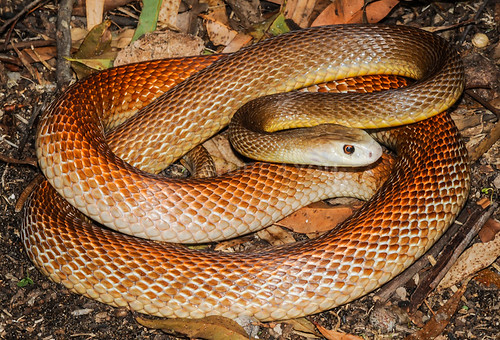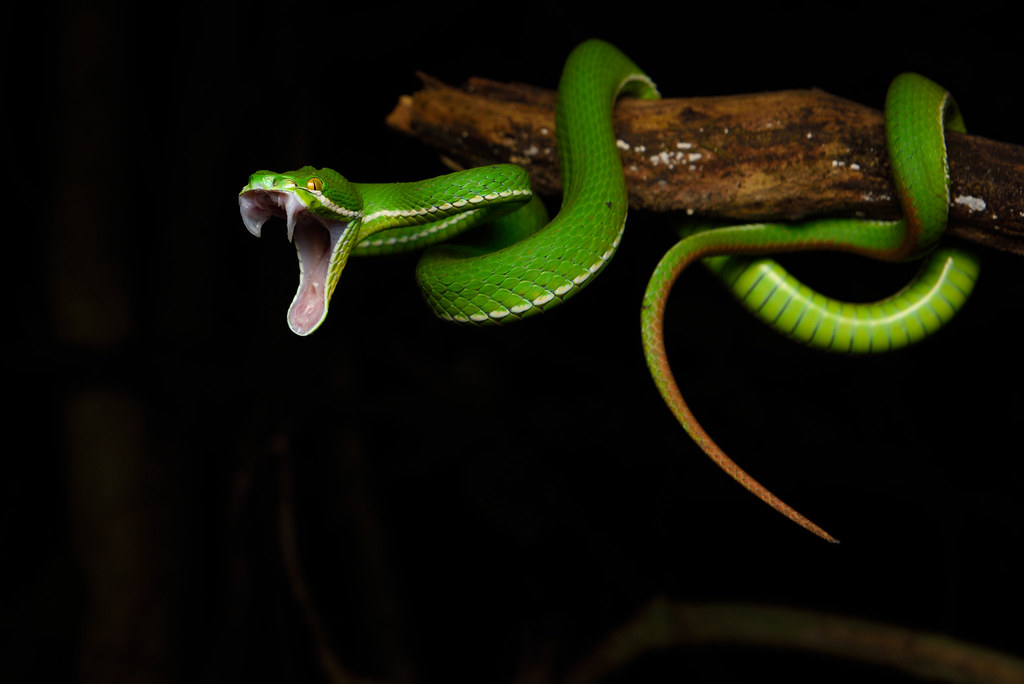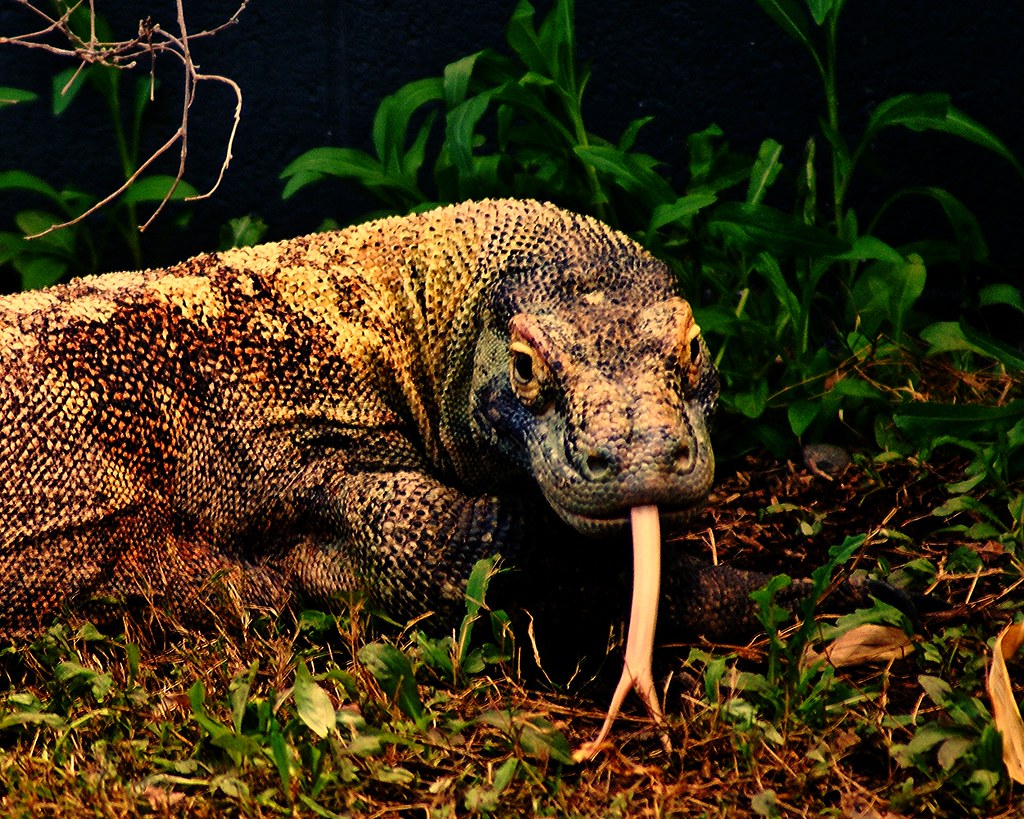In the shadowy realm of venomous creatures, one reptile stands above all others, not for the deadliness of its bite, but for the bewildering complexity of its toxic arsenal. The Australian coastal taipan (Oxyuranus scutellatus) possesses what scientists consider the most biochemically complex venom of any reptile on Earth. Unlike simpler venoms that might contain a handful of toxins, the taipan’s venom is a sophisticated chemical laboratory, housing dozens of specialized compounds designed to overwhelm a victim’s physiological defenses through multiple simultaneous pathways. This remarkable evolutionary achievement represents millions of years of predator-prey co-evolution, resulting in a venom so intricate that it continues to provide new discoveries for medical research. As we dive into the fascinating world of this lethal cocktail, we’ll explore not just its composition, but the evolutionary arms race that created it, and the surprising ways this natural weapon might one day save human lives.
The Australian Coastal Taipan: Evolution’s Perfect Predator

The coastal taipan has earned its fearsome reputation through a combination of speed, size, and venom potency that makes it one of Australia’s most dangerous snakes. Growing up to 3 meters (10 feet) in length, this elapid snake possesses lightning-fast reflexes that allow it to strike with precision multiple times in rapid succession. Unlike many venomous snakes that prefer to avoid confrontation, the coastal taipan can be surprisingly aggressive when threatened, delivering significant venom quantities with each bite. Its slender build and light brown to dark tan coloration help it blend perfectly into its natural habitat of coastal heathlands, tropical forests, and cane fields across northern and eastern Australia and southern New Guinea. This perfect combination of physical attributes and venom complexity has made the taipan an apex predator in its ecosystem, specialized in hunting warm-blooded prey like rats and bandicoots.
A Chemical Arsenal Unlike Any Other

What truly sets the coastal taipan apart is the staggering complexity of its venom, containing over 70 different bioactive compounds working in concert to rapidly immobilize and kill prey. This toxic brew includes neurotoxins that attack the nervous system, procoagulants that disturb blood clotting, myotoxins that damage muscle tissue, and cytotoxins that destroy cells on contact. Perhaps most impressive are the taipan’s taipoxins, pre-synaptic neurotoxins so potent that a single drop could kill approximately 12,000 guinea pigs. Unlike many other venomous creatures that might specialize in just one or two venom strategies, the taipan’s multi-pronged approach ensures that if one physiological system manages to resist the attack, others will still succumb. This redundancy in venom function represents an evolutionary masterpiece, allowing the snake to quickly subdue mammals that would otherwise be dangerous for a reptile to tackle.
Neurotoxins: Shutting Down the Nervous System

The primary killing components in taipan venom are its potent neurotoxins, which target the connection points between nerves and muscles known as neuromuscular junctions. These specialized proteins, including the notorious taipoxin and paradoxin complexes, bind to nerve terminals and prevent the release of acetylcholine, the neurotransmitter that tells muscles to contract. Within minutes of envenomation, victims experience progressive paralysis that starts with drooping eyelids and difficulty speaking, eventually spreading to the respiratory muscles. The taipan’s neurotoxins are so efficiently designed that they can pass through protective barriers and bind irreversibly to their targets, making them among the most difficult venom components to neutralize with antivenom. What makes these compounds even more remarkable is their incredible specificity – they can distinguish between nearly identical receptor sites, demonstrating a level of molecular precision that pharmaceutical researchers can only dream of replicating.
Blood Coagulation Disruptors: The Internal Hemorrhage Strategy

While the neurotoxins are attacking the nervous system, another set of taipan venom components simultaneously targets the blood. These procoagulant enzymes, sometimes called “thrombin-like” proteins, trigger an overwhelming activation of the blood clotting cascade, rapidly depleting the body’s clotting factors. This clever attack creates a paradoxical situation: initial microclots form throughout the circulatory system, but as clotting factors are exhausted, the victim develops an inability to form new clots, resulting in uncontrollable bleeding. Internally, this can lead to hemorrhaging in vital organs, while externally, even minor cuts may continue bleeding indefinitely. The taipan’s procoagulants are so potent that they can clot all circulating fibrinogen (the precursor to clot formation) within minutes of injection, making them among the most powerful hemotoxic compounds found in any snake venom worldwide.
Myotoxins: Destroying Muscle From Within

Adding another dimension to its deadly arsenal, the coastal taipan’s venom contains specialized myotoxins that directly attack skeletal muscle tissue. These destructive proteins bore holes into muscle cell membranes, causing them to rupture and spill their contents into the bloodstream. As muscle cells break down in a process called rhabdomyolysis, they release myoglobin and other cellular components that can overwhelm and clog the kidneys, potentially leading to acute renal failure. Victims often experience severe muscle pain, weakness, and dark cola-colored urine as the body attempts to filter these breakdown products. Unlike some elements of the venom that act within minutes, the myotoxic effects may develop over hours or days, creating a second wave of life-threatening complications even if the victim survives the initial neurotoxic assault. This delayed action represents an evolutionary insurance policy, ensuring prey animals don’t escape even if they initially survive the bite.
Cytotoxins: Breaking Down Cellular Barriers

The coastal taipan’s venom also contains cytotoxic components that directly attack cell membranes, causing tissue destruction at and around the bite site. These phospholipase enzymes function like molecular scissors, cleaving the phospholipid molecules that form cell membranes and causing cells to rupture. Beyond just causing local tissue damage, these cytotoxins serve an important purpose in venom distribution by breaking down barriers between tissues, allowing other toxins to spread more rapidly throughout the victim’s body. The resulting inflammation and tissue destruction can cause severe pain, swelling, and in extreme cases, necrosis of the affected area. Interestingly, while many vipers and cobras produce strongly cytotoxic venoms that cause dramatic local tissue destruction, the taipan’s cytotoxins are somewhat less pronounced, focusing instead on systemic effects – a specialization that reflects its evolutionary history as a hunter of mammals that need to be quickly immobilized rather than slowly digested.
Evolutionary Arms Race: Why Such Complexity?

The extraordinary complexity of taipan venom represents the culmination of an evolutionary arms race spanning millions of years. As prey animals evolved resistance to simpler venoms, taipans responded by developing new toxin variants that could overcome these defenses. This process of co-evolution has resulted in what biologists call “toxin redundancy” – multiple toxins targeting different physiological systems to ensure prey immobilization even if one pathway fails. The taipan’s preference for warm-blooded mammals like rats, which are both dangerous to tackle and quick to escape, created strong selective pressure for venom that works rapidly and through multiple mechanisms. Recent genomic studies have revealed that many taipan venom components evolved through gene duplication events, where an original toxin gene was copied and then modified to create new variants with altered functions. This molecular diversification has accelerated over evolutionary time, resulting in the astonishingly complex venom we see today – a perfect example of how predator-prey relationships drive some of nature’s most sophisticated biochemical innovations.
Medical Significance: One of Australia’s Deadliest

The coastal taipan’s complex venom makes it one of Australia’s most medically significant snakes, with untreated bites having a mortality rate approaching 100% before antivenom became available in 1956. The speed with which symptoms develop is particularly alarming, with victims potentially experiencing respiratory paralysis within 2-6 hours without medical intervention. A single bite can deliver up to 400mg of venom – enough to kill approximately 100 adult humans – though typical yields are lower. Despite its potential lethality, modern medical treatment with appropriate polyvalent antivenom has dramatically improved survival rates, with deaths now rare when patients receive timely care. However, treating taipan bites remains challenging even with antivenom due to the venom’s rapid action and the fact that some components, particularly those that have already bound to nervous tissue, may be difficult to neutralize. For this reason, medical protocols emphasize pressure-immobilization first aid techniques to slow venom spread until the victim can reach a hospital.
From Killer to Cure: Medical Applications

The same complexity that makes taipan venom so deadly also makes it an invaluable resource for medical research and drug development. Researchers have isolated numerous taipan venom components with potential therapeutic applications, particularly in the fields of hemostasis and pain management. One notable success story is the development of “textilinin” (now called Q8008), a taipan venom component that prevents unwanted blood clotting during surgery without the bleeding risks associated with current anticoagulants. Another promising compound from taipan venom is being developed as a potential treatment for neuropathic pain, targeting specific pain receptors without the addictive properties of opioids. The venom’s procoagulant enzymes have also informed the development of tests for blood clotting disorders and may lead to new treatments for conditions like hemophilia. Perhaps most remarkably, researchers are investigating how the taipan’s neurotoxins might help treat certain neurological disorders by providing insights into nerve signaling mechanisms that conventional research approaches couldn’t reveal.
Laboratory Studies: Decoding Nature’s Most Complex Toxin

Modern proteomics and genomic techniques have revolutionized our understanding of taipan venom, allowing scientists to identify individual components and their molecular targets with unprecedented precision. Using mass spectrometry, researchers have created comprehensive venom profiles that catalog the full range of proteins present and their relative abundances. Functional studies using isolated tissues and animal models help determine exactly how each component affects different physiological systems, while crystallography techniques reveal the three-dimensional structures of key toxins, showing precisely how they dock with their targets. Transcriptomics approaches examining the taipan’s venom gland RNA have uncovered the genetic blueprints for venom production, revealing surprising diversity even within individual snakes. These advanced techniques have shown that taipan venom composition isn’t static – it can vary based on the snake’s age, diet, geographic location, and even seasonal factors, creating additional layers of complexity that researchers are only beginning to understand.
Comparing Venoms: What Makes Taipan Special?

While many snakes possess complex venoms, the coastal taipan stands out even among its closest relatives for both diversity and efficiency of its toxic components. Compared to the king cobra’s venom, which specializes primarily in neurotoxicity, or the rattlesnake’s emphasis on tissue destruction and hemotoxicity, the taipan employs a more balanced and multifaceted approach. Even within the taipan genus, the coastal species possesses notably higher complexity than its inland cousin (Oxyuranus microlepidotus), despite the latter having higher measured toxicity in laboratory tests. Other elapid relatives like tiger snakes and brown snakes share some venom components with taipans but lack the same degree of functional redundancy across multiple physiological systems. When compared to non-snake venoms, taipan venom most closely resembles that of certain Australian box jellyfish and cone snails in terms of biochemical complexity, despite these organisms being separated by hundreds of millions of years of evolution – a remarkable example of convergent evolution toward similar solutions for the challenge of rapidly immobilizing prey.
Conservation Status and Habitat Threats

Despite possessing one of nature’s most sophisticated biochemical weapons, the coastal taipan faces significant challenges from habitat loss and human development across its range. While not currently listed as endangered, populations have declined in areas where sugarcane fields and other agricultural lands that once provided ideal habitat have been converted to residential developments. Climate change poses another potential threat, as rising temperatures and changing rainfall patterns alter the distribution of prey species and suitable habitat. Unlike some venomous snakes that are heavily persecuted, taipans generally avoid human contact, but habitat fragmentation increasingly forces them into proximity with human settlements, leading to conflict situations. Conservation efforts focus on habitat preservation in key regions and education programs to reduce unnecessary killing of these ecologically important predators. Some researchers worry that declining taipan populations could have cascading effects on ecosystems, particularly through increases in rodent populations that these snakes help control.
The Future of Venom Research

The study of taipan venom represents one of the most exciting frontiers in natural product research, with new technologies enabling discoveries that were impossible just a decade ago. Advanced genetic sequencing techniques are now allowing scientists to identify the full complement of genes involved in venom production, while CRISPR gene editing offers the possibility of producing modified venom proteins with enhanced therapeutic properties. Computational approaches using machine learning can predict how venom components might interact with different human targets, vastly accelerating the drug discovery process. Perhaps most intriguingly, researchers are developing “venomics” platforms that can rapidly screen thousands of venom components against disease targets, potentially uncovering new treatments for conditions ranging from cancer to autoimmune disorders. As this research progresses, the taipan’s complex venom – evolved to kill – may ironically become a lifesaving resource for millions of patients worldwide, transforming one of nature’s most sophisticated weapons into one of medicine’s most valuable toolkits.
The coastal taipan stands as nature’s biochemical masterpiece, its venom representing perhaps the pinnacle of evolutionary refinement in toxic delivery systems. Beyond the morbid fascination with its deadly potential lies a deeper appreciation for the molecular intricacy that makes this venom so unique. Each of its 70+ components tells a story of predator-prey co-evolution, biochemical innovation, and natural selection working across millions of years to create what might be the most sophisticated toxic cocktail on Earth. As we continue to unravel the mysteries of taipan venom, we gain not only respect for this remarkable reptile but also potential solutions to some of medicine’s most challenging problems. In this transformation from killer to cure lies perhaps the most fascinating aspect of the taipan’s complex venom – that something evolved to cause harm might ultimately become one of humanity’s greatest tools for healing.




